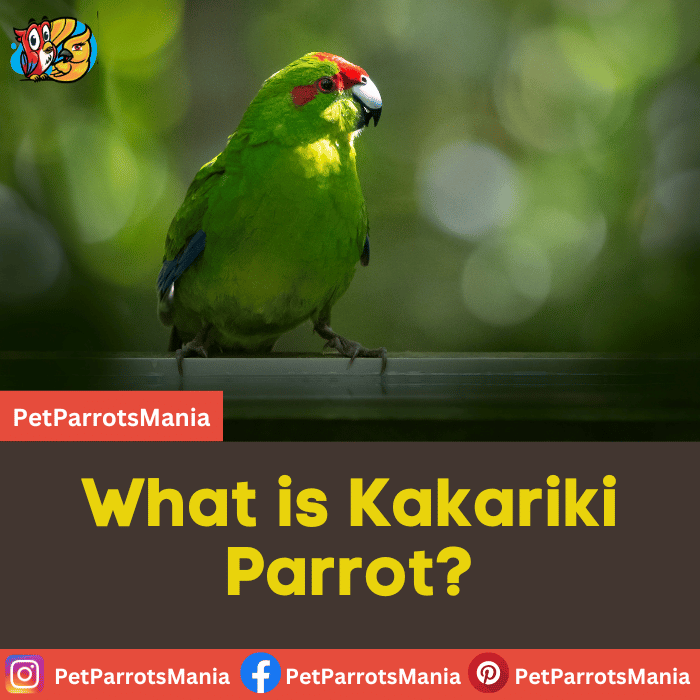Last Updated on June 12, 2023
Kakariki parrots are small to medium-sized parrots that are native to New Zealand. They are famous for their vibrant colors, playful personalities, with high energy. If you want to know more about kakariki parrots? Then in this blog post, we will discuss the key characteristics of kakariki parrots that make them unique among all parrots.
Description of Kakariki Parrots:
Kakariki’s are the most common parrots. They are small to medium-sized. There are three species of kakariki parakeets. The bird is mostly with green color plumage. The three species are yellow-crowned parakeets (cyanoramphus auriceps), red-crowned or red-fronted parakeets (cyanoramphus novaezelandiae), and critically endangered orange-fronted parakeets (Malherbe’s parakeet), etc.
Characteristics:
Kakariki parrot is about 25-28 cm and weighs about 65 grams. The wing size of a kakariki is approximately 5 Inches. Generally, the bird is chubby in shape. It has fluffy green feathers over the body and red, orange, or yellow crowns. The bird is among the most stunning pet parrots in their physical looks.
They also have blue-green feathers around their wings. They are pretty intelligent birds, so they can easily be tamed and trained because they have a high IQ level and good concentration and learning ability.
Habitat:
The kakariki parrots are rare, although they are present in much-frosted north, south, and Stewart areas in the sub-arctic Auckland islands. They are also present occasionally on the mainland but are mostly confined to offshore islands. Habitat destruction is the main reason for their rareness.
Personality and Behavior:
Kakariki parrots are the most social bird and bond closely with their owners and family. They are not too shy but quiet, sensitive, and emotional birds.
If they get attached to one family member, then they can become rude, nippy, and aggressive to other family members, so be careful with young children.
The kakariki parrots are calm and less noisy. Although they are quiet, they can have different noises and imitate words. This feature makes them quite funny and engaging birds.
Additionally, they are also attention seekers. This stunning bird is the most intelligent and can learn many words which you teach them.
Feeding Habits:
The kakariki parrots are omnivores. Instead, they are primarily seed eaters. They can eat flowers, seeds, fruits, flower buds, etc. Sunflower and safflower seeds are the favorites of kakariki parrots. They can also eat fresh fruits and vegetables, including apples, berries, bananas, broccoli, carrot, radish, etc.
Health care:
Regarding health care, kakariki parrots are low-maintenance, healthy, and fit pet birds. If the pets are well cared for, and a proper diet and nutrition are offered, they spend a healthy life.
Life span:
Parrots can live a more extended life. If they are well cared for, and proper nutrition is provided, kakariki parrots can live 15-20 years less than the average age of bigger birds.
Breeding:
Kakariki parrots are incredibly fertile and have a high fecundity rate if fed a balanced nutritious diet. Kakariki gets sexual maturity at the age of just five months. Proper breeding is vital for them. If the eggs are not adequately incubated, they can develop issues like blindness and compromised kidneys. Female parrots can lay eggs at four months, even without a partner. The female can lay 6-14 eggs if a properly balanced diet is offered. Birds have a high fecundity rate for egg breeding. The average incubation period of eggs incubation is about 19 days. Parents do well caring for their babies until they get mature.
Conservation Status?
Kakariki parrots are the least concerned species on the red list of the International Union of Conservation for Nature (IUCN). However, a few subspecies are endangered because of habitat loss and predation. So some important measures are required to safeguard the endangered species of this parrot.
Price:
The average price of kakariki parrots is about 20$-800$ depending on the breed and popularity. Always buy a parrot from a reputable and legal, authentic breeder.

